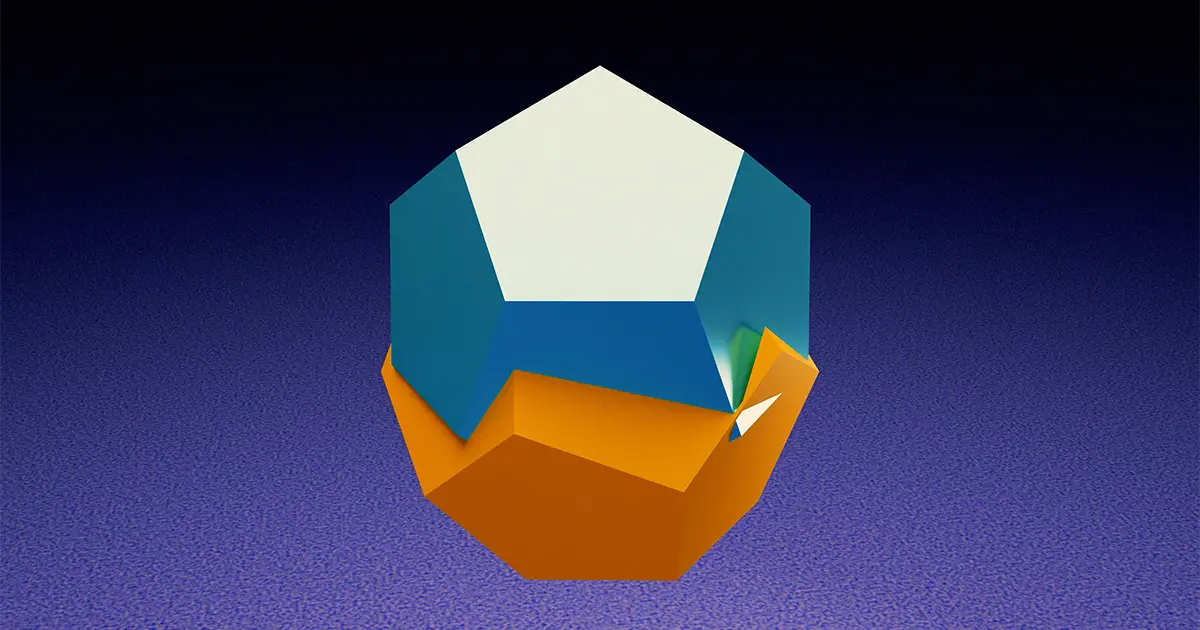First Shape Found That Can’t Pass Through Itself | Quanta Magazine
-
In a breakthrough announced in October 2025, mathematicians Jakob Steininger and Sergey Yurkevich discovered the first shape proven to lack the “Rupert property” - meaning it cannot have a straight tunnel bored through it large enough for an identical copy to pass through[^1].
Named the “Noperthedron,” this 90-vertex, 152-face shape disproved a centuries-old conjecture that all convex polyhedra would have this pass-through property, first demonstrated by Prince Rupert with a cube in the 1600s[^1].
The proof combined theoretical advances with massive computer calculations, examining approximately 18 million possible orientations. “It’s a miracle that it works,” said Steininger, who developed the proof with Yurkevich while both worked in Austria[^1].
This resolved a geometry problem dating back to Prince Rupert’s royal bet that one cube couldn’t pass through another. While Rupert won that bet, and mathematicians later proved many complex shapes could have pass-through tunnels, the Noperthedron finally provided the first counterexample[^1].
[^1]: First Shape Found That Can’t Pass Through Itself | Quanta Magazine

First Shape Found That Can’t Pass Through Itself | Quanta Magazine
After more than three centuries, a geometry problem that originated with a royal bet has been solved.

Quanta Magazine (www.quantamagazine.org)
-
 S Science shared this topic on
S Science shared this topic on
-
In a breakthrough announced in October 2025, mathematicians Jakob Steininger and Sergey Yurkevich discovered the first shape proven to lack the “Rupert property” - meaning it cannot have a straight tunnel bored through it large enough for an identical copy to pass through[^1].
Named the “Noperthedron,” this 90-vertex, 152-face shape disproved a centuries-old conjecture that all convex polyhedra would have this pass-through property, first demonstrated by Prince Rupert with a cube in the 1600s[^1].
The proof combined theoretical advances with massive computer calculations, examining approximately 18 million possible orientations. “It’s a miracle that it works,” said Steininger, who developed the proof with Yurkevich while both worked in Austria[^1].
This resolved a geometry problem dating back to Prince Rupert’s royal bet that one cube couldn’t pass through another. While Rupert won that bet, and mathematicians later proved many complex shapes could have pass-through tunnels, the Noperthedron finally provided the first counterexample[^1].
[^1]: First Shape Found That Can’t Pass Through Itself | Quanta Magazine

First Shape Found That Can’t Pass Through Itself | Quanta Magazine
After more than three centuries, a geometry problem that originated with a royal bet has been solved.

Quanta Magazine (www.quantamagazine.org)
I read through this and something I couldn’t quite understand is - is a sphere able to “pass through” itself. If not then that seems like a baseline proof that such objects exist, then the question is “are there any convex polygons”.
-
I read through this and something I couldn’t quite understand is - is a sphere able to “pass through” itself. If not then that seems like a baseline proof that such objects exist, then the question is “are there any convex polygons”.
The property is (was) specific to convex polyhedrons.
-
Ahh I overlooked the “polyhedron” part. Thanks!